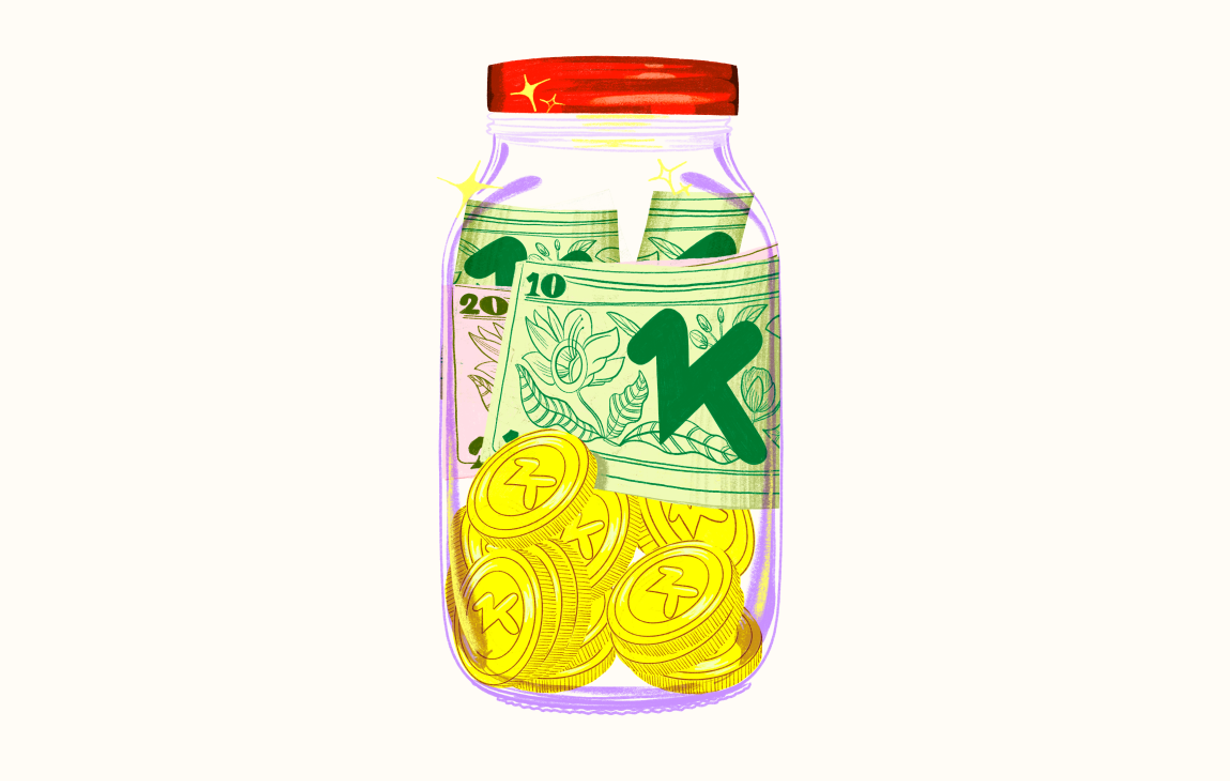Interest rates directly control how fast your savings grow.
When rates are higher, your savings earn more interest. When rates are lower, your money grows more slowly, and you may need to save more or look for better rates to hit the same goals.
A savings account that actually grows savings
KOHO High Interest Savings
If interest rates are going to affect your savings anyway, you want your money sitting somewhere that takes advantage of them, not wastes them.
With KOHO High Interest Savings, you can:
Earn a high interest rate on the cash you’ve set aside
Keep your money flexible and accessible in the app
Use it as a hub for things like an emergency fund or short-term goals
Earn up to 3.5% interest on every dollar
When Interest Rates Are Higher
Higher interest rates are generally good news for savers:
Your savings earn more interest, so your balance grows faster
You may reach goals like an emergency fund or vacation sooner
High interest savings accounts become more attractive than leaving cash in a low- or no-interest chequing account
The trade-off is that borrowing (like mortgages, lines of credit, or loans) can be more expensive—but from a pure savings perspective, higher rates help.
When Interest Rates Are Lower
Lower interest rates usually mean:
Your savings grow more slowly
You might need to save more each month to reach the same goal
The gap between a regular savings account and a high interest option can matter even more
In low rate environments, it’s especially important not to leave extra money sitting in an account that pays almost nothing.
Why Compounding Matters
Interest rates don’t just affect how much you earn this month—they also affect how much you earn on your new, bigger balance in the future.
Even a small difference in rate can add up over time:
A higher rate means more interest each year
That extra interest gets added to your balance
Next year, you’re earning interest on a larger amount
The longer you save, the more this compounding effect matters.
How to Make Interest Rates Work for You
To get the most out of whatever the current rate environment is:
Keep day-to-day spending in chequing, but move surplus cash to a high interest savings account
Automate transfers so you’re consistently adding to your savings
Review your accounts periodically to make sure your savings aren’t stuck at a low rate
You can’t control where interest rates go, but you can choose where your money sits and how hard it’s working for you.

About the author
Quan works as a Junior SEO Specialist, helping websites grow through organic search. He loves the world of finance and investing. When he’s not working, he stays active at the gym, trains Muay Thai, plays soccer, and goes swimming.
Read more about this author